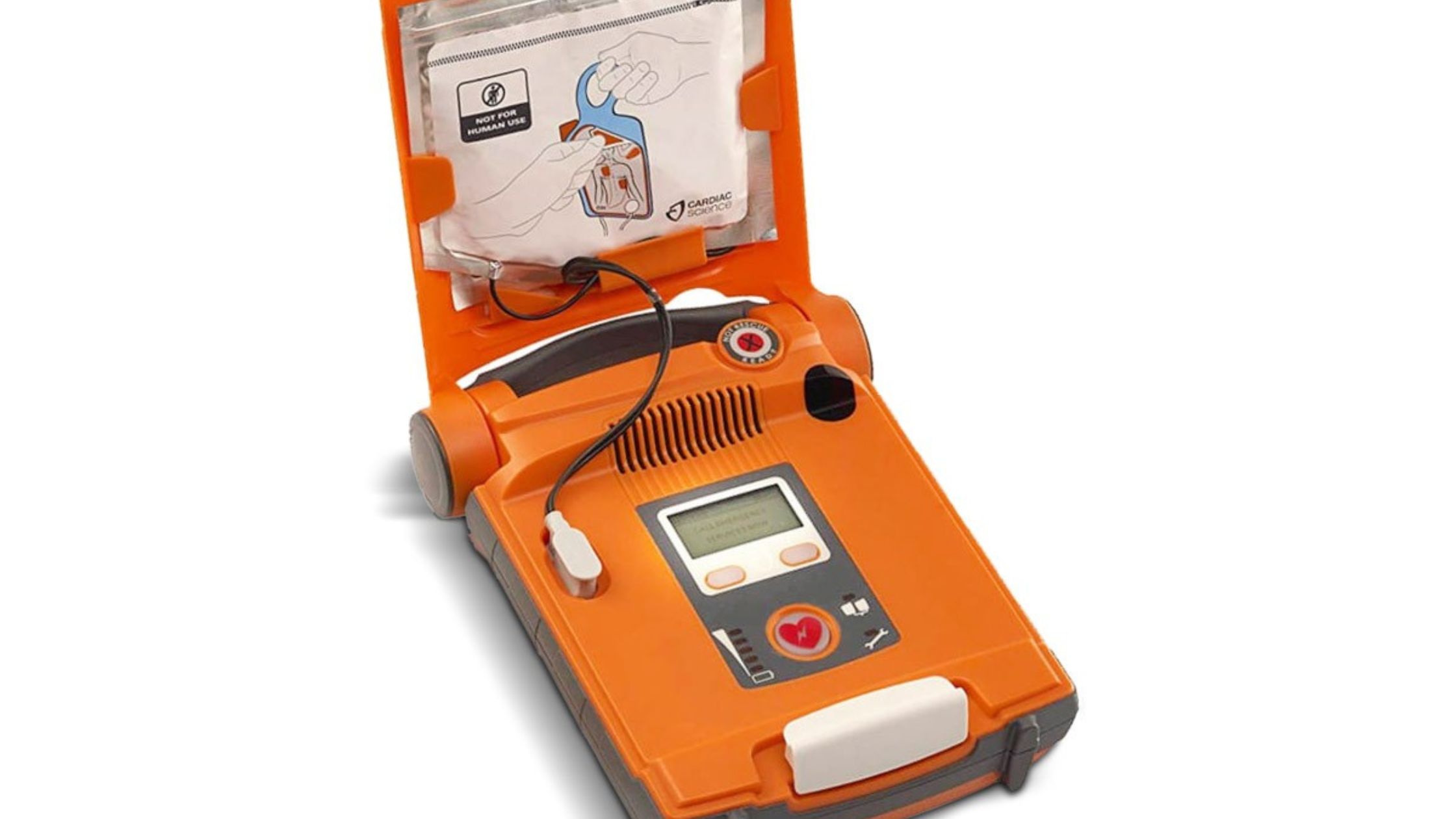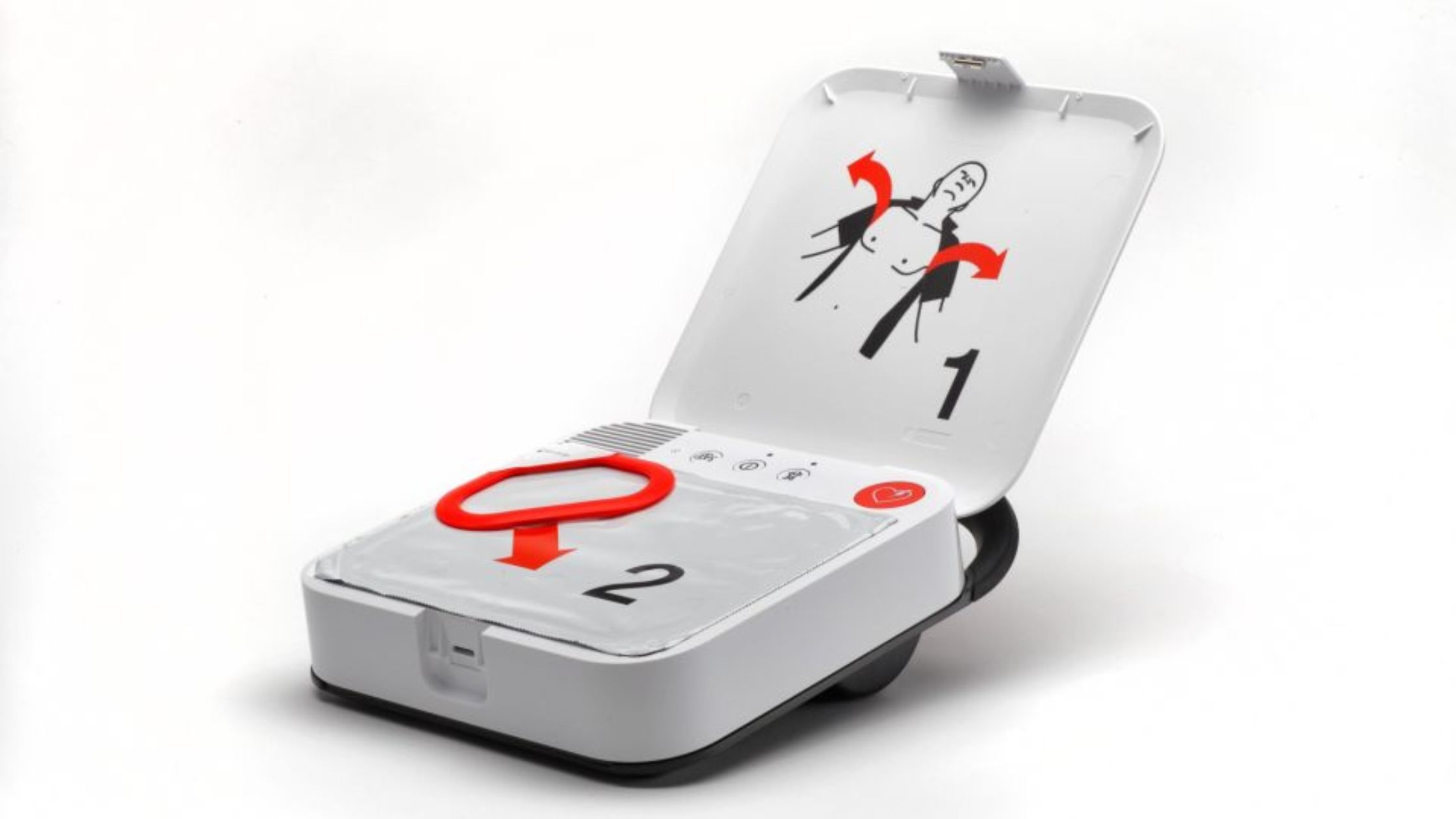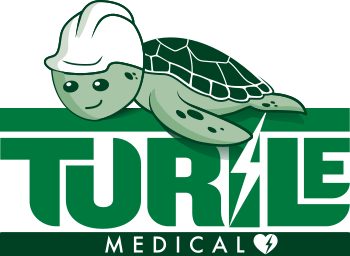
If someone collapsed in front of you, would you know what to do? For many members of the public the answer is no. The idea of using a defibrillator can feel daunting. People worry that when/if the time comes they will panic, use it wrong, or even make things worse. The good news is that modern defibrillators are designed with ordinary people in mind. You don’t need to be a paramedic. You don’t need special training. You don’t even need to know what you’re doing. Because the machine tells you everything.
That’s not a figure of speech. When you open a defibrillator, it literally starts talking to you. These clever devices are built to guide you, step by step, even if your hands are shaking and your brain is going a mile a minute.
Defibrillators talk to you
The moment you open a defibrillator; it starts working immediately. To save time, there’s usually no power button, you just lift the lid, and the machine starts talking to you. A calm, clear voice gives instructions, including where to put the pads, when to stand clear, and what to do next.
Some models also have video screens that show visual instructions. That might sound helpful, but in practice, it can be too much. In a high-stress situation, more information doesn’t always equal better outcomes. When someone’s life is on the line, simplicity wins. At Turtle Medical, we believe that audio instructions are easier to follow, especially when time is tight.
Step-by-step guide: How to use a defibrillator
So, what should you expect if you ever need to use one? Here’s how a defib typically works:
Open the defibrillator
Lift the lid to activate the device. Some models might need a button press, but most turn on automatically. Defibs with a child/adult switch can be transferred between modes at the wqqqqqqqqqgrammed to move at a manageable pace.
Apply the electrode pads
You’ll find two sticky pads with images showing where they go, one on the upper right of the chest, the other on the lower left side (adult pads on adults). The voice will guide you on placement. The pads also have sensors that help the machine “read” the heart’s rhythm.
Stand back while the machine analyses
Once the pads are in place, the defibrillator checks the person’s heart. It’s looking to see whether a shock is needed. Don’t touch the person while this happens.
Deliver the shock (if advised)
If the defib determines that a shock is necessary, it will tell you to press the shock button. If no shock is needed, it won’t give you the option, it’s completely safe. You can’t accidentally shock someone who doesn’t need it.
After that, the defibrillator may instruct you to start CPR or continue monitoring until emergency services arrive. It stays with you the whole way through.
You can’t get it wrong
Here’s the most important thing to keep in mind: you cannot get it wrong. The defibrillator won’t let you make a mistake that could harm someone. It only delivers a shock if the heart rhythm is one that responds to it, otherwise, it won’t activate the shock button. So even if you’re panicked or unsure, the defibrillator acts as a safety net. It does the thinking for you. All you need to do is follow instructions.

Real life example of a defibrillator being used to save a life
Stories like this happen more often than you might think. At a local Sunday League football match, a player collapsed unexpectedly. A bystander with no medical background grabbed the defibrillator from the side of the pitch, opened it, and followed the voice instructions. Thankfully, the player survived. It was fast thinking, yes, but also a testament to how these machines are built to be used by anyone.
What can you do to be ready for an emergency?
Trust the machine
It’s designed for everyday people in high-stress situations. You don’t need to second-guess yourself.
You don’t need training
First-aid courses are always useful, and training helps you feel more confident, but the defibrillator works for anyone, trained or not.
Call 999 immediately
Always call emergency services, as they’ll help guide you on the phone while professional help is on the way. If there’s more than one person around, one should call while the other starts using the defibrillator.
Don’t wait
If someone is unresponsive and not breathing normally, use the defibrillator. The sooner it’s used, the better the chances of survival.
Be prepared
It’s worth taking 60 seconds today to locate the nearest defibrillator at your workplace, gym, or local park. Knowing where it is can save precious time later.
If you’re not sure where to start or you’d like some tailored advice about defibrillators, please contact us today. Our friendly team will be happy to answer any questions and offer recommendations suited to you and your needs.

